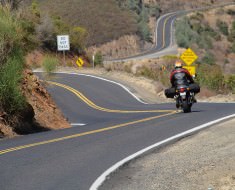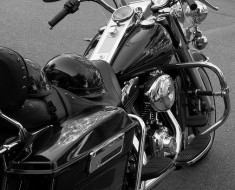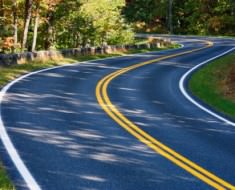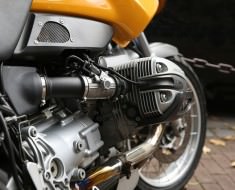Ongoing general maintenance will keep your motorcycle in great condition with little or no unpleasant surprises on the road.
Modern bikes require less maintenance than they did in the 60’s and 70’s but they still need a lot more maintence than a car. This higher reliability also means that there are a whole bunch of motorcyclists out there who haven’t a clue how to work on their bikes or what really needs to be done to ensure reliability.
Motorcyclists should be able to do at least baisic maintenance on their bikes.
The more care and maintenance you give a bike the longer it will last. Preforming general maintenance on your motorcycle will also help you spot problems before they happen.
Things to Check Regularly
Tip: There are dozens of parts on a motorcycle that could be checked on a regular basis and there is nothing wrong with check all those parts. But try to slim the list down to the most important items so you still have time to ride.
Here is a basic list of some of the most important things to check on a motorcycle. Even doing a little can make a big difference. Battery, Oil, Tires (tyres), Brakes, Chain and sprocket (Shaft Drive, Belt Drive) and Fuel (Gas, Petrol).
Tires, Tyres.
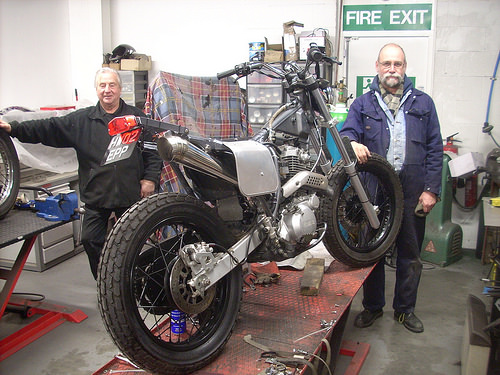

Tip: Keep a low pressure tire gauge (0psi – 80psi) in your bike tool bag at all times. Try to remember to check your tire pressure every time you fill up for gas.
Keep your tires correctly inflated. A tire that is very under-inflated generates a lot of heat which can lead to a blowout. Tires that run too hot also wear out more quickly. The most common motorcycle breakdown is for tire damage.
Purchase a pencil-type tire gauge and use it regularly until you instinctively ‘know’ what your tires feel like correctly inflated. Use of the gauge and visual inspections must become second nature.
Replace your tires sooner rather than later. If tread depth is 1-2mm it is time to replace your tires. Take a tip from the mad sportbikers and the canyon racers – they never skimp on their tyres as they are often all that stands between them and the pearly gates.
Brakes
Tip: Brake fluid absorbs moisture over time and becomes less effective. Replace brake fluid every one to two years and your brakes will perform the best they can.
Motorcycles have up to two brake fluid reservoirs, one for the front, usually found on the handlebars and one for the back. Both should be checked regularly. Topping up should only be done from a new, sealed bottle as brake fluid tends to absorb moisture over time. Beware – brake fluid, if spilt on paintwork eats right through to the bare metal.
Also check the thickness of the brake pads. If you allow them to go right down to the metal your brake disc will be damaged resulting in an unnecessary and expensive replacement. Fitting braided steel brake lines will increase the performance of your brakes by roughly 50%
Chain and sprockets, Shaft Drives, Belts
Tip: Lube your chain after each ride when the chain is warm so the oil can easily soak in and get into all the tight spots of the chain.
These items that are essential to the wellbeing of your bike. If not well maintained you will end up spending a lot of money all too often to have them replaced.
Chains: Lubricate them often with a commercial chain spray every time you fill up for gas (or at the end of each ride). Spray liberally on the side of the chain that comes into contact with the sprockets. Ensure that you spray both left and the right hand side of the chain. Position a piece of newspaper so that you do not dirty the rear wheel rim as you spray. Use a second piece on the floor to catch any drips. Wait five or ten minutes before you wipe all excess oil off the chain. This whole process is a lot easier if your motorbike has a center stand. Spinning the back tire will ensure that the rest of the chain is lubricated when it comes into contact with the sprocket and pinion. This is a task that is best done when you return home from your ride while the chain is still warm.
Bike chains are never taut but must be able to sag between 3/4″ to 1 1/4″ at the mid-point between the two sprockets. The sag is used when the bike suspension moves up and down over uneven surfaces.
Shaft Drives: Even though shaft drives on motorcycles require little maintenance we would suggest replacing the shaft drive oil every time you change the oil on your motorcycle. This will lead to a very long and happy life for the shaft drive.
Belt Drives: As with shaft drives, belts do not require a lot of maintenance. Everytime you change the oil on your motorcycle check the belt tension and adjust if necessary. Make sure your belt is always clean.
Fuel
Tip: Check your fuel filter on a regular basis and replace every 2 years.
Fuel is quite an often overlooked as a form of preventative maintenance on a motorcycle.
Check the fuel filter (if you have one) to make sure it is not clogged and looks clean and clear. Replace fuel filters every 2 years.
Check the fuel lines for weather damage and cracking, replace immediately if any is found.
Generally untreated gas only lasts (is good for) 6 months. After this time the gas starts to break down. Dispose of untreated gas older than 6 months rather than risk running it. Treated gas can last up to 2 years.
Remember when parking your motorcycle for any length of time to turn the petcock (fuel tap) to the off position. This prevents any fuel potentially leaking out and flooding the carbs or the engine.
Oil
Tip: Check your oil level when it is cold before you go on a ride. If it is not at its high or max level top it up before going out.
Regular oil and filter changes will keep your motorbike young and healthy.
Oil level
Make sure you regularly check and keep your oil level at its HIGH or MAX level. It is best to check your oil level on the bikes center stand or when it is in a level position. An under filled oil level can be disastrous while too much oil over the limit may flood your air cleaner with oil. (it is embarrassing too).
You should also know the difference between the ‘low’ level and the ‘high’ level in ml e.g. if the difference is 300ml you cannot purchase a 500ml tin and pour the whole can in!
Here are some pointers regarding oil which are true for most motorcycles
– The bike should be level as possible.
– The oil should best inspected cold and is therefore best done before you go out on a ride.
– Be careful to not allow foreign matter and dirt to fall in during the inspection process
– With threaded dipsticks do not screw the dipstick in when taking a reading, just allow it to rest on the lowest thread.
– High temperatures, time, speed, heavy traffic, short trips and dust quickly destroy the quality of your oil. If you do ride in these conditions change your oil more frequently.
– I suggest changing your oil every 2-4000km or 3-6 months, whichever comes first. (I change mine every 2,500 km).
– It is recommended you change your oil filter every other oil change if you are using a good quality oil filter (e.g. WIX, Your Motorcycle Manufacturer Brand). If not, every oil change!
– Always use a good oil filter (WIX brand from UAP/NAPA is a recommend one)
– Motorcycles can and do use the same oils as cars although special synthetic motorcycle oils are available. Always use the recommended oil weight for your motorcycle (e.g. 10w40 or 20w50). Older (15+ year old) motorcycles run best on regular (non-synthetic oil), while new bikes like either.
Battery
Tip: Check the fluid levels on each chamber. If any chamber is low, carefully top it up. Use only distilled or deionized water, NOT tap water. Tap water has minerals in it that will not do the battery any good.
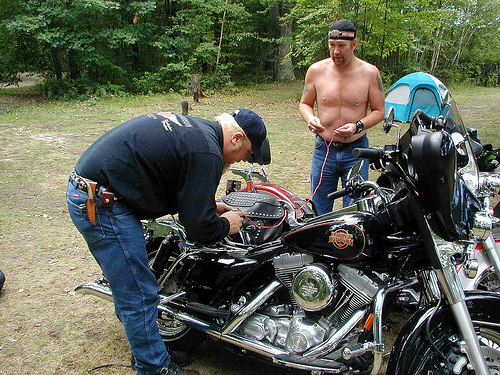

The humble battery is a very common cause for motorcycle breakdowns! Unfortunately they are awkward to get to and therefore do not get checked as often as they should.
A battery only requires a little monthly maintenance to perform perfectly. Keep the battery charged to 100%, recharging when the lights dim, the starter sounds weak, or the battery hasn’t been used in more than two weeks. Other than that, follow this simple check list every month:
– Check the electrolyte level
– Top up only with distilled or deionized water, wear gloves and protective glasses. Top up in a well-ventilated area, Beware of fumes.
– Keep the top free of grime
– Check cables, clamps, and case for obvious damage or loose connections
– Clean terminals and connectors as necessary
– Check inside for excessive sediment, sulfation or mossing
– Make sure the exhaust tube is free of kinks and clogs
– Replace caps firmly
– Finish up by testing the battery with either a hydrometer or voltmeter. To extend the service life of your battery, make monthly battery maintenance part of your routine.
Use only distilled or deionized water, NOT tap water. Tap water has minerals in it that will not do the battery any good.
(Source: totalmotorcycle)



